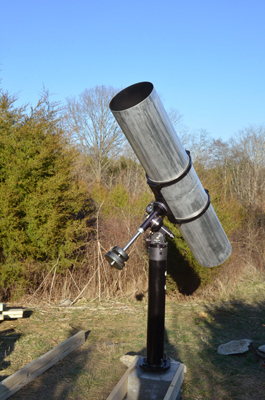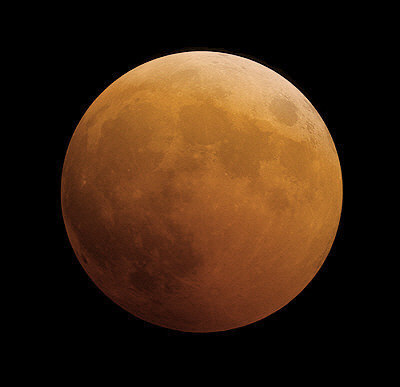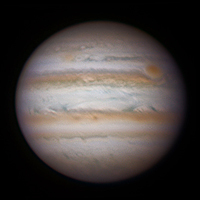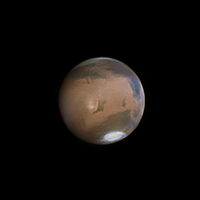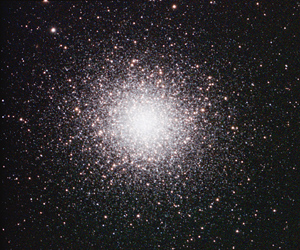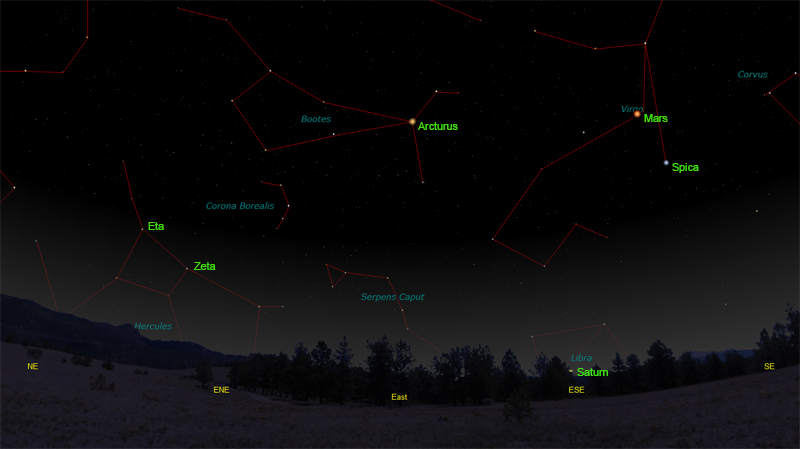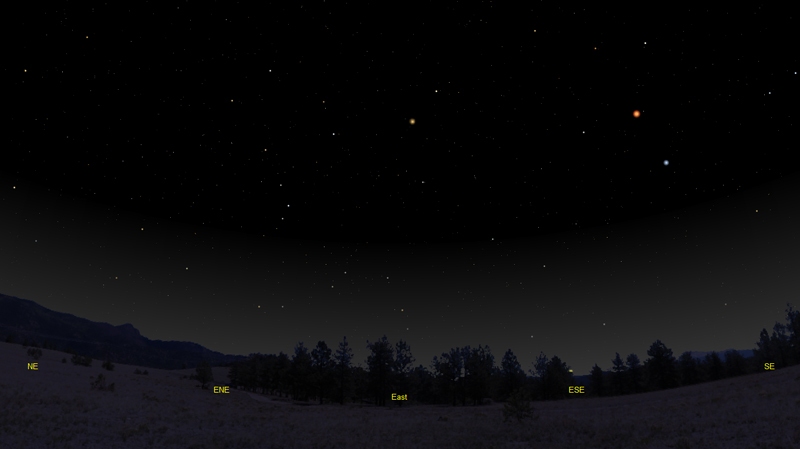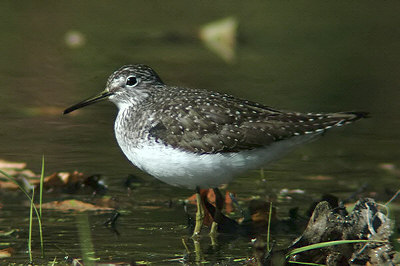The purpose of this feature is to give scout leaders, educators and naturalists an idea of some of the natural events coming up each month. We will try to cover a variety of natural events ranging from sky events to calling periods of amphibians, bird and mammal watching tips, prominent wildflowers and anything else that comes to mind. We will also note prominent constellations appearing over the eastern horizon at mid-evening each month for our area for those who would like to learn the constellations. If you have suggestions for other types of natural information you would like to see added to this calendar, let us know! Note: You can click on the hyperlinks to learn more about some of the featured items. To return to the Calendar, hit the "back" button on your browser, NOT the "back" button on the web page. All charts are available in a "printer friendly" mode, with black stars on a white background. Left clicking on each chart will take you to a printable black and white image. Please note that images on these pages are meant to be displayed at 100%. If your browser zooms into a higher magnification than that, the images may lose quality. Though we link book references to nationwide sources, we encourage you to support your local book store whenever possible. Notes and Images From March 2014
Lately we've been spending quite a bit of time working on a new optical tube assembly and observatory for our astrophotography. Shown at left is the unpainted tube mounted on the newly fortified pier and foundation for the scope. We are not building a dome, as we enjoy our night creatures too much to wall ourselves off from them. We instead are constructing a small low-walled wooden shed with a roll-off tin roof which will allow us to still see and hear night birds, insects and mammals. We've been enjoying our resident Brown Thrasher's singing a lot lately while we've been working, and a Hermit Thrush stopped by for a minute one morning, giving its blessing to the site. The new observatory will be fairly high tech on the inside, allowing complete remote operation and imaging over the web via computers, cell phones or tablets. So the roof can be opened and images made just as easily from Australia as from our library. Not that we don't like to be outside with the telescope. Far from it. Some of our fondest memories are of nights spent outside with the scope. But it should save me a lot of wear and tear of carrying the tube assembly back and forth to the house, and make imaging with the scope a lot more efficient. The new 12.5 inch f/6 mirror gathers light four times faster than our present 6 inch refractor. Hopefully we will have the new scope up and operating soon.
Sky Events for April 2014:
A Total Lunar Eclipse occurs on the evening of April 14-15th. This is the first total lunar eclipse since 2011 for North America. The entire eclipse will be visible from our area. This will be a late night/early morning event, but please don't leave before totality. To see the full moon illuminated by the combined sunrises and sunsets around the Earth is not to be missed. I once saw a group set up an expensive set of large aperture binoculars for a group of children for a total eclipse, only to leave before totality, which as I recall was around 10:00pm. This unfortunately deprived the kids of an unforgettable experience. On the plus side, they got back home on time. Partial eclipse begins at 12:58am Central Daylight Time on April 15th. Totality begins at 2:07am CDT and ends at 3:25am CDT. The Lyrid meteor shower peaks on April 22nd, but a third quarter moon will tend to wash out all but the brightest meteors.
Evening Sky:
Jupiter continues to be visible overhead in Gemini at dusk at the beginning of the month. Binoculars, if held steady, will show the four Galilean moons when they are not transiting the planet or being eclipsed. Mars appears larger this month than it has in the last 6 years. It rises around 7:43pm at the beginning of April in Virgo. It reaches opposition on April 8th and is closest to the Earth on April 14th. At that time it will have an apparent size of 15.16 seconds of an arc. For the best views, wait until Mars has climbed high in the sky. Much of the time Mars looks like a dim reddish star, but at oppositions it glows like a hot coal. Seeing details on the surface of Mars requires patience. You have to look over an extended period of time, waiting for periods when the atmosphere settles down and the cryptic dark markings become more evident. The view will not be nearly as sharp or as large as the image at right. Mars has always kept its secrets well, or we would not have gone more than half of a century drawing illusory "canals" across its surface. Sky and Telescope has a "Mars Profiler" that shows which side of Mars is facing us at any given time. You can access it here. On the home page, scroll down to "Interactive Observing Tools" and click the "Mars Profiler". You will need to register (free) to use the tool. The names on the map of Mars date back in most cases to Italian astronomer Giovanni Schiaparelli. As was typical in that time period, the dark areas were named for seas and the light areas were named for land masses. Schiaparelli used the names of ancient lands on Earth for his map of Mars. The dark area of Syrtis Major (on the right hand side of Mars in the image above, shrouded in a bluish cloud) is the ancient name of the Gulf of Sidra (off the coast of Libya) on modern maps. If you can find a copy, the book Mars and Its Satellites (Jurgen Blunck) is a fascinating gazetteer of the Martian features that traces the history of each name. I once spotted a small feature called Nodus Alcyonius, and tracing the history of the name, wound up with a connection to our Belted Kingfisher (Ceryle alcyon). Saturn rises about 10:13am on April 1st in Libra. As with Mars, to get the best telescopic views wait until the planet has climbed high in the sky just before dawn. Morning Sky: Venus shines brightly in the dawn sky during April, rising just before dawn.
Constellations: The views below show the sky looking east at 10:00pm CDT on April 8th. The first view shows the sky with the constellation outlined and names depicted. Star and planet names are in green. Constellation names are in blue. The second view shows the same scene without labels. Bright objects in the eastern sky this month include the stars Arcturus and Spica. Mars reaches opposition on April 8th and shines like a hot coal above Spica. Saturn is clearing the treetops on the ESE horizon. New constellations are Serpens Caput, the Serpent (Head), and Hercules, the Strongman. As spring progresses and Hercules rises higher in the sky, look for the globular cluster Messier 13 (M13), which appears like a small fuzzy patch of light about 1/3 of the distance from Eta to Zeta Hercules (see illustration below). A cluster of stars about 21,000 light years away, M13 can be made out with the naked eye in a dark country sky when the constellation is high in the sky. Binoculars will help pick it out.
On Learning the Constellations: We advise learning a few constellations each month, and then following them through the seasons. Once you associate a particular constellation coming over the eastern horizon at a certain time of year, you may start thinking about it like an old friend, looking forward to its arrival each season. The stars in the evening scene above, for instance, will always be in the same place relative to the horizon at the same time and date each April. Of course, the planets do move slowly through the constellations, but with practice you will learn to identify them from their appearance. In particular, learn the brightest stars (Like Arcturus and Spica in the above scene looking east), for they will guide you to the fainter stars. Once you can locate the more prominent constellations, you can "branch out" to other constellations around them. It may take you a little while to get a sense of scale, to translate what you see on the computer screen or what you see on the page of a book to what you see in the sky. Look for patterns, like the stars that make up the constellation Corona Borealis. The earth's rotation causes the constellations to appear to move across the sky just as the sun and the moon appear to do. If you go outside earlier than the time shown on the charts, the constellations will be lower to the eastern horizon. If you observe later, they will have climbed higher. As each season progresses, the earth's motion around the sun causes the constellations to appear a little farther towards the west each night for any given time of night. If you want to see where the constellations in the above figures will be on May 8th at 10:00pm CDT, you can stay up till 12:00am CDT on the April 8th and get a preview. The westward motion of the constellations is equivalent to two hours per month. Recommended: Sky & Telescope's Pocket Star Atlas is beautiful, compact star atlas. A good book to learn the constellations is Patterns in the Sky, by Hewitt-White. You may also want to check out at H. A. Rey's classic, The Stars, A New Way to See Them. For skywatching tips, an inexpensive good guide is Secrets of Stargazing, by Becky Ramotowski. A good general reference book on astronomy is the Peterson
Field Guide,
A Field Guide to the Stars and Planets, by Pasachoff. The book retails for around $14.00. Starry Night has several software programs for learning the night sky. Visit the Starry Night web site at www.starrynight.com for details. The Virtual Moon Atlas is a terrific way to learn the surface features of the Moon. And it's free software. You can download the Virtual Moon Atlas here. Cartes du Ciel (described in the monthly notes above) is a great program for finding your way around the sky. It is also free, and can be downloaded here. Apps: We really love the Sky Safari 3 Pro application described here. For upcoming events, the Sky Week application is quite nice. Both apps are available for both I-phone and Android operating systems.
Amphibians:
In addition to earlier breading species like Upland Chorus Frogs, Spring Peepers, Southern Leopard Frogs, and American Toads, listen for Fowler's Toads, Northern Cricket Frogs and Gray Treefrogs. The early calls of Gray Treefrogs sound raspier than the normal trill, as if the frog needs to clear its throat. A fairly new arrival to our area is the Green Treefrog. Don't be too surprised if you see or hear one. Listen also on warm days for American Bullfrogs and Green Frogs. Early April is also a great time to listen for the "yeeooww" calls of Pickerel Frogs. Recommended: The Frogs and Toads of North America, Lang Elliott, Houghton Mifflin Co.
Birds:
The spring migration builds very quickly in April. The neo-tropical migrants are too numerous to list here, but now is the time to get out in the early morning with a pair of binoculars and welcome the new arrivals for the day. Scan the edges of ponds and creeks for Solitary and Spotted Sandpipers. Early arrivals also include Black-and-white Warbler, Black-Throated Green Warbler, Louisiana Waterthrush and Blue-gray Gnatcatcher. Listen at dusk for young Great Horned Owls and Young Barred Owls, doing their raspy "begging" calls. Recommended: The Sibley Guide to Birds, David Allen Sibley The Sibley Guide to Birds of Eastern North America, David Allen Sibley An inexpensive guide for beginners is the Golden Guide for Birds.
Wildflowers: Some of our favorite Spring wildflower walks are: The south ridge at the Owl's Hill Nature Center in Brentwood, Tennessee. The Edwin Warner paved loop at the Warner Parks in Nashville or just about any trail in Warner Parks. The Angel Falls trail along the Cumberland River at the Big South Fork Recreational Area, near Jamestown, Tennessee.
Archives (Remember to use the back button on your browser, NOT the back button on the web page!) Natural Calendar February 2014 Natural Calendar December 2013 Natural Calendar November 2013 Natural Calendar September 2013 Natural Calendar December 2012 Natural Calendar November 2012 Natural Calendar September 2012 Natural Calendar February 2012 Natural Calendar December 2011 Natural Calendar November 2011 Natural Calendar September 2011 Natural Calendar February 2011 Natural Calendar December 2010 Natural Calendar November 2010 Natural Calendar September 2010 Natural Calendar February 2010 Natural Calendar December 2009 Natural Calendar November 2009 Natural Calendar September 2009 Natural Calendar February 2009 Natural Calendar December 2008 Natural Calendar November 2008 Natural Calendar September 2008 Natural Calendar February 2008 Natural Calendar December 2007 Natural Calendar November 2007 Natural Calendar September 2007 Natural Calendar February 2007 Natural Calendar December 2006 Natural Calendar November 2006 Natural Calendar September 2006 Natural Calendar February 2006
Natural Calendar
December 2005
Natural Calendar
November 2005
Natural Calendar
September 2005
Natural Calendar
February 2005
Natural Calendar
December 2004
Natural Calendar
November 2004
Natural Calendar
September 2004
Natural Calendar
February 2004
Natural Calendar
December 2003
Natural Calendar
November 2003
Natural Calendar
September 2003 Natural Calendar February 2003 Natural Calendar December 2002 Natural Calendar November 2002 Nature Notes Archives: Nature Notes was a page we published in 2001 and 2002 containing our observations about everything from the northern lights display of November 2001 to frog and salamander egg masses. Night scenes prepared with The Sky Professional from Software Bisque All images and recordings © 2014 Leaps |
|||||||||||||||
